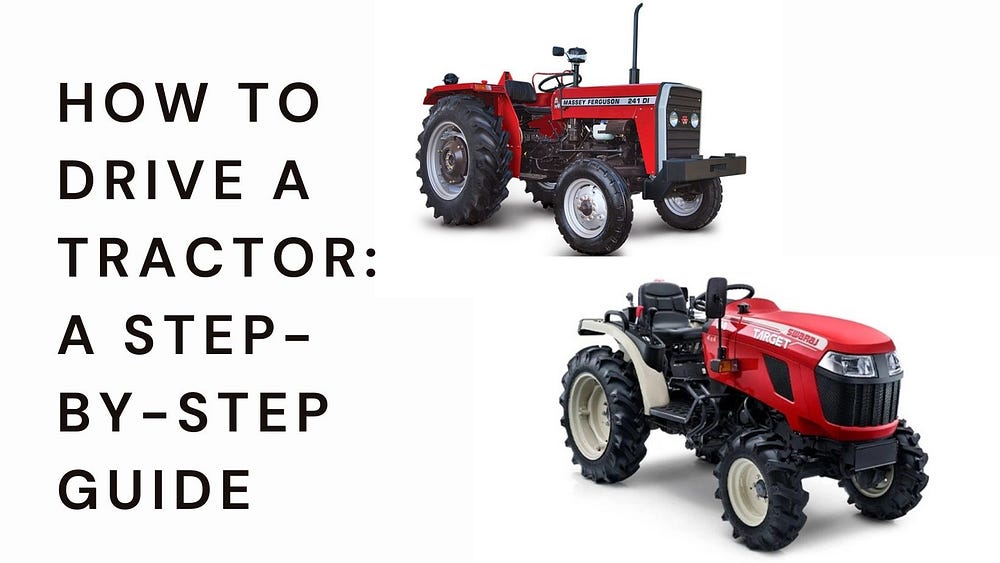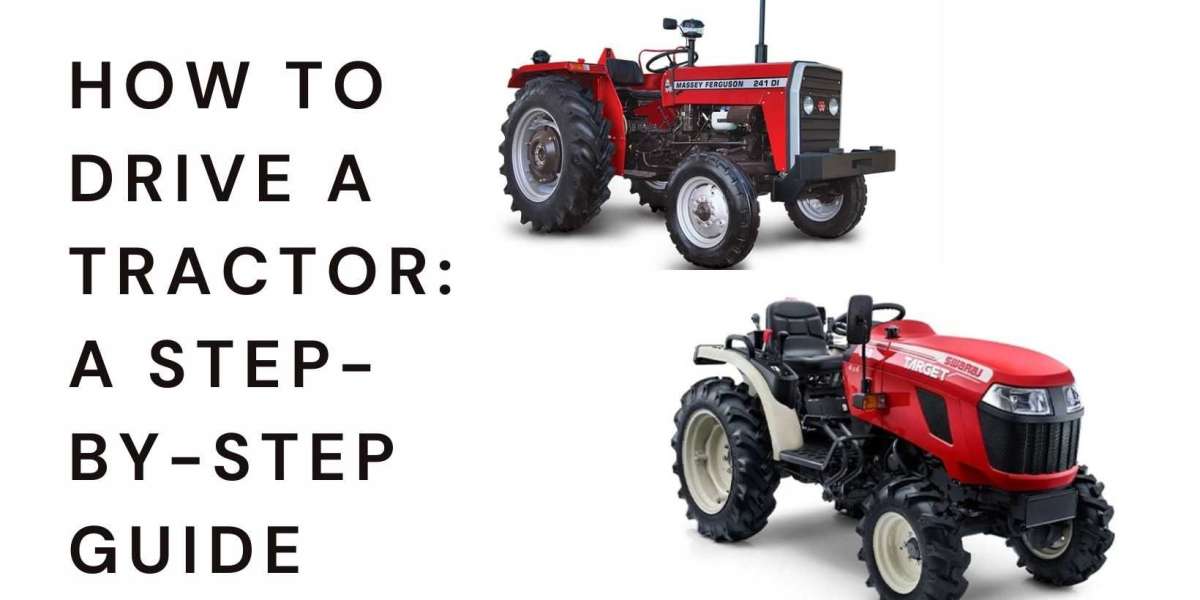Driving a tractor is an essential skill for anyone involved in agriculture, construction, or rural industries. Whether you’re handling a compact mini tractor, a durable Eicher tractor, or an advanced New Holland tractor, the process requires careful preparation and understanding. This guide will take you through each step, ensuring safety and efficiency.

Understanding the Basics of a Tractor
Types of Tractors
- Mini Tractors
These are compact, affordable, and ideal for small-scale farming or gardening tasks. Mini tractors are easy to operate and maneuver, making them perfect for light tasks such as mowing or tilling small plots of land. - Eicher Tractors
Known for their rugged build and fuel efficiency, Eicher tractor are designed for medium to heavy-duty agricultural work. They are versatile and widely used for plowing, seeding, and hauling tasks. - New Holland Tractors
Built with advanced technology, New Holland tractors are designed for large-scale farming operations. They provide exceptional power, comfort, and features like precision farming tools, making them highly efficient for modern agriculture.
Key Components of a Tractor
Understanding the key parts of a tractor is crucial before you start driving:
- Engine: Powers the tractor and varies in size depending on the model.
- Transmission: Includes gears that manage speed and power.
- Clutch and Brake Pedals: Used for controlling movement and stopping.
- Steering Wheel: Helps guide the tractor’s direction.
- PTO (Power Take-Off): Transfers power from the engine to attachments like plows or mowers.
- Hydraulics: Operates attachments such as loaders or trailers.
Pre-Driving Safety Checks
Inspecting Tires, Brakes, and Lights
Before you start the tractor, ensure it’s safe to use:
- Tires: Check for proper inflation and inspect for visible damage like cracks or punctures. Proper tire pressure ensures stability and smooth operation.
- Brakes: Test the brakes to confirm they are responsive. This is particularly important for larger models like Eicher or New Holland tractors.
- Lights: Ensure all lights, including headlights, indicators, and brake lights, are functioning for safety during low-visibility conditions.
Checking Fuel and Fluid Levels
Proper fuel and fluid levels are essential for smooth operation:
- Fuel: Mini tractors typically need less fuel, whereas larger models like Eicher or New Holland may require more for extensive tasks.
- Oil and Coolant: Check engine oil using the dipstick and inspect coolant levels to prevent overheating.
- Hydraulic Fluids: Essential for operating attachments and lifting mechanisms.
Wearing Appropriate Safety Gear
Always prioritize safety by wearing:
- Sturdy boots with good grip.
- Gloves for a secure hold on the controls.
- A helmet for protection in rough terrain.
- Reflective clothing for visibility, especially when operating in low light.
Familiarizing Yourself with Tractor Controls
Basic Tractor Controls
- Steering Wheel: Directs the tractor’s path. Newer models like New Holland tractors often include power steering for easier handling.
- Gear System: Most tractors use manual gears. Mini tractors usually have simpler gear systems, while Eicher tractors offer more gears for better control over power and speed.
- Clutch, Brake, and Accelerator Pedals:
- The clutch disengages the engine from the wheels, enabling you to change gears.
- Brakes help slow or stop the tractor, with dual brakes allowing sharper turns.
- The accelerator controls engine speed and power output.
Understanding the Hand Throttle
The hand throttle allows you to set a consistent speed, which is particularly useful during tasks like plowing or mowing. Advanced tractors like New Holland often include precision throttle controls for greater efficiency.
tarting the Tractor
Steps to Start a Mini Tractor
- Sit in the seat and fasten your seatbelt if available.
- Ensure the gear lever is in neutral.
- Insert the key and turn it to the “on” position.
- Press the clutch and start the engine by turning the key further.
- Slowly release the handbrake, engage first gear, and release the clutch to move forward.
Starting an Eicher Tractor
- Perform a dashboard check for fuel levels and warning indicators.
- Engage the clutch and ensure the gear is in neutral.
- Turn the ignition key and let the engine idle briefly.
- Shift into the desired gear and release the clutch gradually to start moving.
Starting a New Holland Tractor
- Inspect the digital dashboard for alerts or error messages.
- Engage the parking brake and press the clutch.
- Turn the key to start the engine and adjust the RPM using the throttle.
- Select the appropriate gear and gently release the clutch to begin.
Operating the Tractor
Basic Driving Techniques
- Always start at a slow speed to get a feel for the tractor.
- Use lower gears for heavy loads or uneven terrain.
- Practice turning, reversing, and stopping in an open area before operating in tighter spaces.
Using Attachments
- Engage the PTO to power implements such as seeders, mowers, or harvesters.
- Adjust the hydraulics to attach and position equipment like plows or loaders.
- Ensure all attachments are securely fastened before starting work.
Parking the Tractor
- Shift into neutral and engage the parking brake.
- Turn off the engine and remove the key.
- Conduct a post-operation inspection to check for any issues or maintenance needs.
Conclusion
Driving a tractor, whether it’s a mini tractor, an Eicher model, or a New Holland powerhouse, is a skill that requires preparation, practice, and a thorough understanding of the machine. By following these steps, you can ensure a safe and efficient driving experience. From pre-checks to mastering controls and utilizing attachments, this guide covers everything you need to know to operate a tractor with confidence.
FAQs
- Do I need a license to drive a tractor?
Yes, in most regions, a license or certification is required to operate a tractor, especially on public roads. - What is the difference between a mini tractor and a regular tractor?
Mini tractors are smaller, lighter, and designed for lighter tasks, while regular tractors handle heavier operations and larger-scale tasks. - How often should I service my tractor?
Regular servicing is recommended every 200–500 hours of use, depending on the model and workload. - Which tractor is best for beginners?
Mini tractors are ideal for beginners due to their simplicity and ease of use. - What should I check before starting a tractor?
Always inspect tires, fuel levels, brakes, and hydraulic systems before starting the tractor.







